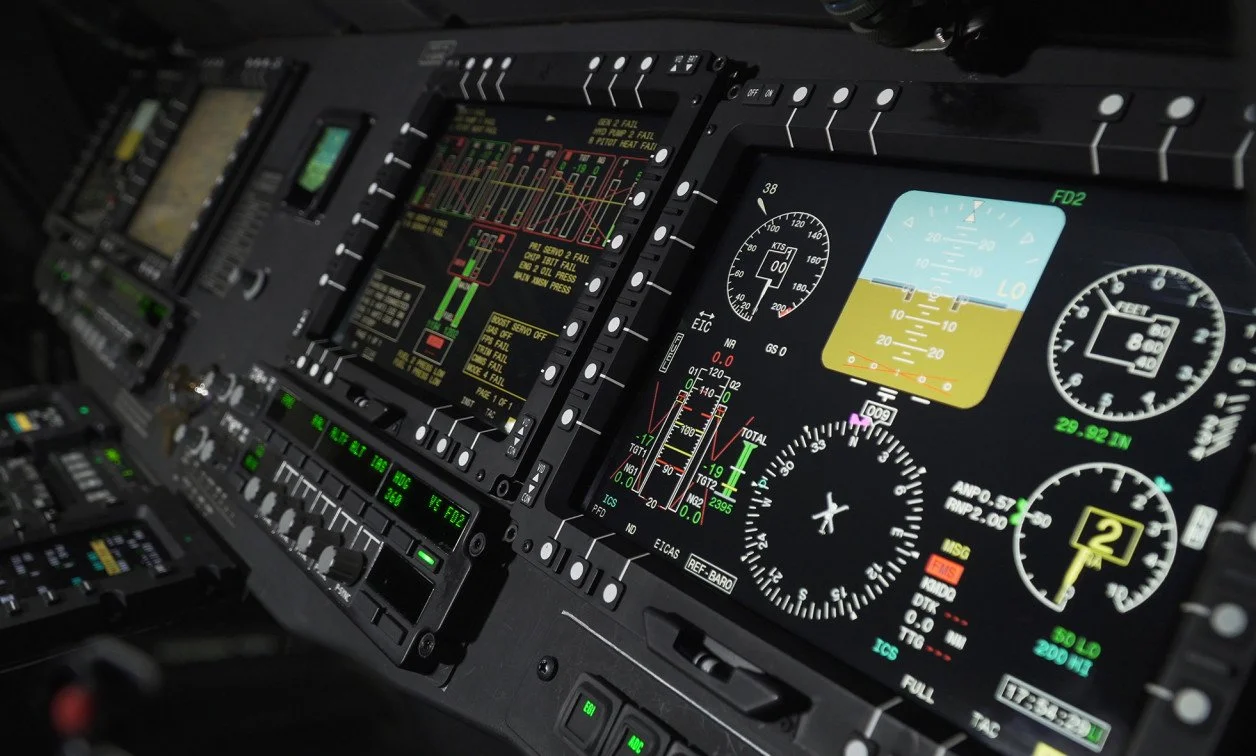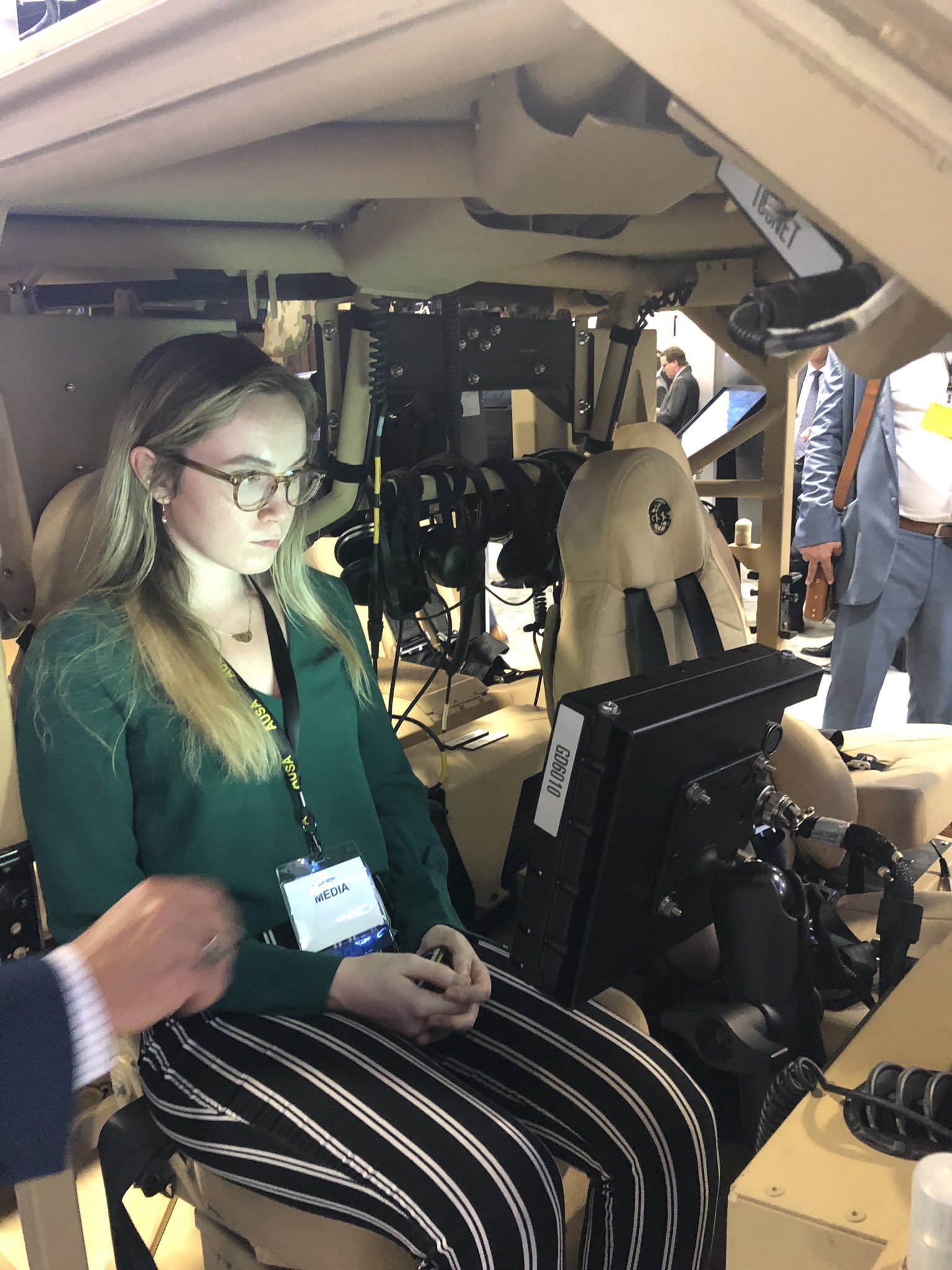Unmanned ISR payloads leverage MOSA designs
See more, detect more, and decode more – these are the primary requirements being asked of unmanned systems in the military, and proprietary hardware and software can make achieving those goals a challenge. This is why Army, Navy, and Air Force leaders mandated a Modular Open Systems Approach (MOSA) for all new programs and upgrades. MOSA examples include the Sensor Open Systems Architecture (SOSA) Technical Standard and the Future Airborne Capability Environment (FACE) Technical Standard. These initiatives among others, aim to offer commonality of hardware to enable easier and more affordable technology insertion in unmanned systems.
Electronic warfare systems demand multifunctionality and integration in RF and microwave designs
Radio frequency (RF) and microwave technology used in the military is ever-evolving and necessarily acclimating to the congested digital battlefield. These solutions need to be fluent in the language of electronic warfare (EW). Demands for multifunctionality, digitization, and increased sensitivity are pushing designers to add these capabilities that warfighters require when translating electronic noise into actionable information.
Soldiers in GPS-denied environments require sensor-powered navigation tech
Knowing your exact location, how you got there, and how to get back are luxuries that the military on the move doesn’t always have the option to exercise. The satellite-based Global Positioning System (GPS) – such a staple of modern navigation – is undeniably a technological feat but can become an exploitable weakness when manipulated by an adversary. Technologies designed to operate in GPS-denied environments are being engineered in response to the U.S. Department of Defense’s (DoD’s) need to operate in areas where navigational infrastructures simply cannot exist.
5G and the military: A new era of connectivity
Fifth-generation wireless technology, or 5G, is poised to emerge in a big way into the defense market. While the buzz surrounding the 5G technology standard has been growing in the general public in recent years, the U.S. Department of Defense (DoD) has been trailing behind commercial entities on adopting 5G due in part to both the slower pace of the DoD’s acquisition process and the hard-to-keep-up-with pace of consumer-technology refresh. However, officials at several defense communications companies agree that it’s just a matter of time before 5G-enabled military solutions are deployed and forever change the way in which the armed forces communicate.
Automation, digitization, and GaN drive shipboard radar upgrades
Threats facing the U.S. Navy and U.S. Marine Corps are evolving rapidly, making innovations in early-warning architectures critical. Shipboard radar systems are progressing far quicker than what was previously possible because of the exploitation of modern-day technologies like gallium nitride (GaN) components and continuous software deployment, automated testing, and digitization. To better enable the development of these systems, naval researchers and electronics providers are looking to utilize commercial off-the-shelf (COTS) products, open architectures, and even artificial intelligence (AI) and machine learning (ML).
Exploiting big data for defense
On the battlefield, time can be a dependable driver and a formidable adversary. For this reason, companies supplying military electronics are viewing the services’ all-encompassing decision-making processes through a data-powered lens in hopes of giving the military one thing: Actionable information in the shortest possible time frame.
Leveraging small sats for defense: A matter of commoditization
Space exploration, observation, and communication systems are entering a renaissance. The advent of launch juggernauts like SpaceX, OneWeb, and even the U.S. Space Force are systematically redefining the way that technology is developed and acquired for use beyond the Earth’s atmosphere. Small satellites (small sats) will be among the many platforms that will continue to be affected by recent pushes for modernization.
Open architecture initiatives bolster unmanned sensors and systems
The advent of unmanned systems reflects a huge aspect of warfare – that of protecting the warfighter – through the development of platforms that can be operated by humans from a distance, keeping them out of harm’s way. Some of these platforms are actually on the way to becoming fully autonomous. Hurdles in the way of both manufacturers and end users include interoperability and cost-efficiency. Although these hurdles are challenging, organizations including The Open Group and corresponding consortia have made noticeable strides to standardize in an effort to universalize otherwise complex unmanned systems.
DO-178 continues to adapt to emerging digital technologies
Guilty until proven innocent – that is how the U.S. Department of Defense (DoD) treats the safety-certification process for military avionics systems, and the software portion of these systems is no exception. Certifying DO-178 in avionics software is a detailed process by which the safety and security of the software is determined to be acceptable to fly. The certification process itself is still a work in progress: Having already undergone revisions since its conception in the late 1980s following the emergence of supplemental software in aviation, DO-178 and other safety-certification standards for military and commercial avionics are being challenged to keep pace with digital innovation.
Hypersonics: Making MACH 5 and beyond detectable and defendable
Threats facing the U.S. military are evolving fast – hypersonically fast. At speeds of MACH 5 and greater, hypersonic weapons are becoming increasingly challenging to detect, deter, and destroy. Military-technology manufacturers, however, are refusing to let these light-speed advancements become the Achilles heel for the U.S. Department of Defense (DoD). The methods through which companies in the hypersonic sector plan to ensure domestic confidence in this arena are said to be dependent on innovations like early detection, robust sensor systems, and a better understanding of what exactly makes a hypersonic weapon so lethal.
Dominating the electromagnetic spectrum requires processing and AI innovation
Efforts to dominate the electromagnetic spectrum (EMS) in the military arena are moving forward as manufacturers develop innovative technologies to find actionable needles in the crowded electromagnetic intelligence haystack. Cognitive capabilities, artificial intelligence (AI), and similarly cutting-edge developments have opened a new chapter in electronic warfare (EW), and so too has the need to keep pace with adversarial advancements.
Failure is not an option: the trends behind military test systems
Before any military technology can be fielded, it must undergo a barrage of test and measurement (T&M) scenarios to ensure its operability. The importance of these evaluation systems and their criticality is simple yet profound: The lives of warfighters are dependent on them. In recent years, varying demands and challenges have pushed manufacturers to innovate. Military T&M systems are going digital, becoming software-defined, and are undergoing widespread standardization right alongside so much of the technology used by the U.S. Department of Defense (DoD) today. This inexorable march then prompts the question of what takes priority with the DoD: ensuring compatibility with reliable legacy systems or moving forward with the wave of standardization?
Managing the military’s big data challenge
With every second that ticks by, the amount of data gathered by the U.S. military grows, as does the desire and need by the U.S. Department of Defense (DoD) to extract and use this data to form actionable intelligence. This situation directly results in an intense demand for military technology manufacturers to quickly produce both software and hardware capable of first processing the zettabytes of data that exist on Internet of Things (IoT) devices and then accurately analyzing its value. Successful gathering, processing, and analyzing will effectively change warfare as it is understood today.
Tackling the AI paradox at the tactical edge
Artificial intelligence (AI), as the general public understands it, is frequently associated with alluring – and sometimes alarming – ideas of talking robots, champion chess-playing computers, and sentient technology humans shouldn’t trust. In the defense industry, however, AI is on the path to becoming a loyal companion to the warfighter and manufacturers alike. As technology progresses, so does the range of defense capabilities that AI could not only supplement, but eventually manage.
C-UAS philosophy and needs dictate system advancements
In the counter-unmanned aerial system (C-UAS) arena, the threats they are designed to mitigate depend heavily on the market for which they are intended. A back-and-forth between UAS advancements and growth in the C-UAS industry dictate to manufacturers what these systems need and how much funding it will take to get them there.
Eyes up and out: Advancing situational awareness in helicopter avionics
Basic physics still dictates much of what makes helicopter flight successful, but military airborne platforms are constantly faced with environments civilian rotary- and fixed-wing aircraft simply don’t encounter: Degraded visual environments, a need for reduced workload, and improved pilot-vehicle interface drive military helicopter avionics upgrades and remain at the top of customer design requirements. In response to these military-user needs, companies are attempting to uncomplicate helicopter cockpit designs while using the most advanced electronics available.
RF and microwave suppliers for military use face demands for innovation
Even at its stealthiest moments, war is loud. Not always in the vein of cacophonous, artillery-heavy combat, but think instead of the constant radio-frequency (RF) and microwave communications warfighters and their electronic warfare (EW) solutions emit. Size, weight, and power (SWaP) limitations; the introduction of GaN [gallium nitride]; and the need for wider bandwidths have all driven the demand for specific RF and microwave capabilities.
Innovation in military power supplies: Intelligence, standardization, efficiency
Power-supply designers for military applications face the same reduced cost, size, and weight challenges as other military electronics suppliers. These restrictions can make innovation complicated, but power supply experts innovate nonetheless – in areas like power efficiency, balancing standardization versus customization, intelligent power supplies, and – perhaps most importantly – securing the digital interfaces of modern power supplies.
AUSA and the week full of firsts
This is my first job out of journalism school, sans a bar gig here and there. But as far as pantsuit-wearing, desk-sitting, degree-utilizing jobs go – Associate Editor for Military Embedded Systems is the first title I’ve ever held.
ISR signal processing at the edge
Military users of signal processors seemingly want it all: parts that can process more data but be less detectable to the enemy, transmit data more quickly but don’t heat up from the effort, and operate at extremely powerful levels but are lightweight and ideally palm-sized. These requirements present an obvious challenge for engineers designing these processors for intelligence, surveillance, and reconnaissance (ISR) applications. The various solutions to these ISR demands involve artificial intelligence, machine learning, classification algorithms, and sensor fusion.



















